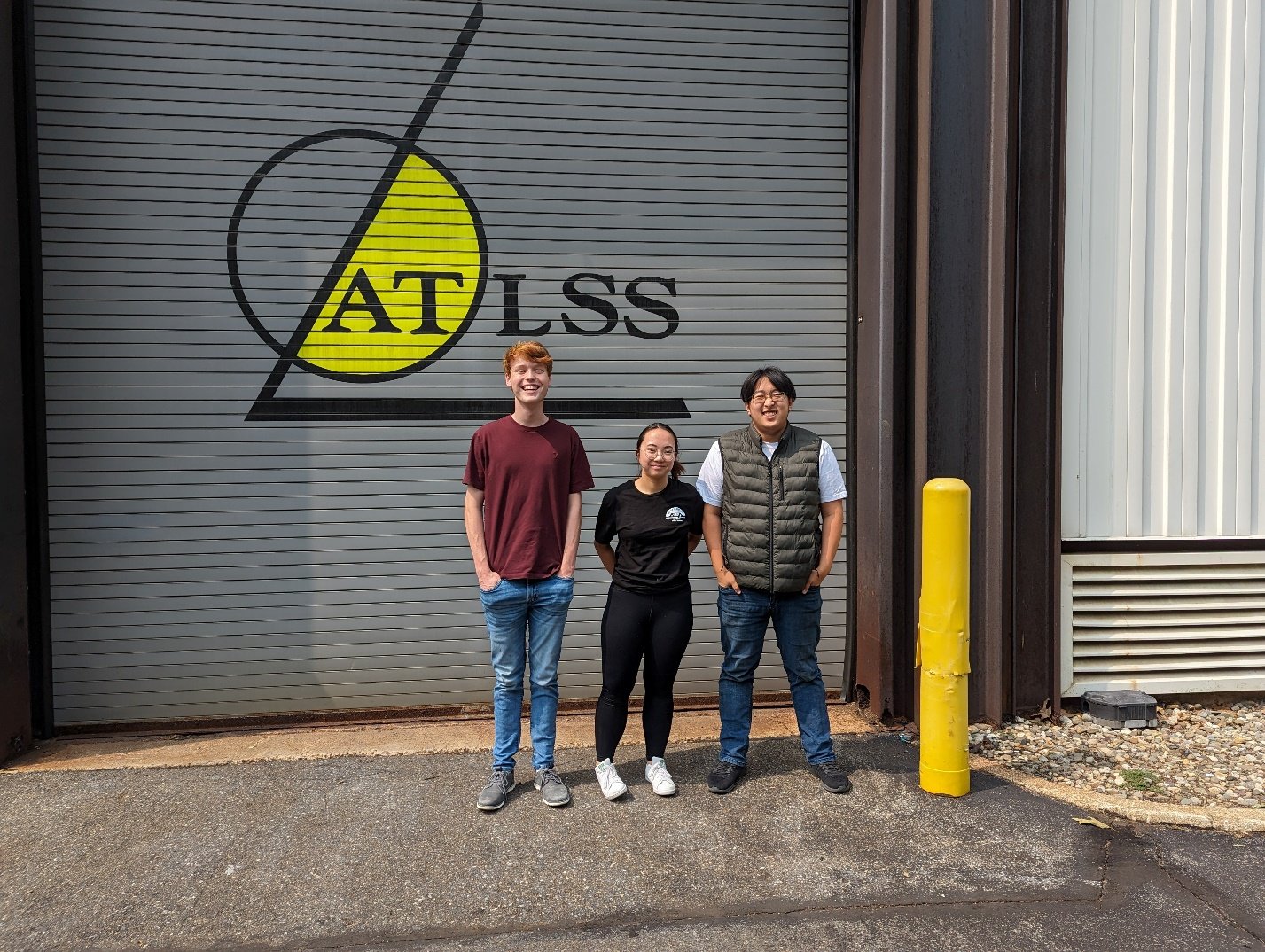NHERI at Lehigh REU students: immersed in hybrid simulation, multi-directional experiments
Published on August 3, 2023
The NHERI Real-Time Multi-Directional (RTMD) Experimental Facility (EF) at Lehigh University is excited to host three REU students this summer. NSF's Research Experiences for Undergraduates (REU) program promotes research and education through internships in active research over the course of ten weeks during the summer. The REU students also participate in Lehigh University's STEM-SI program, which bridges long-standing summer undergraduate student research programs across the STEM Community at the University. The students join the RTMD EF, where they are mentored by experts in real-time hybrid simulations and multi-directional experiments of structures. Their research will be presented on Research Day at Lehigh University as part of the STEM-SI program on August 3, and at the NHERI REU Symposium at Oregon State University on August 10 and 11.

NHERI Lehigh 2023 REUs: Parker Huggins, Wendy Miao, and Yuanlong Dai

Parker Huggins
Parker Huggins is a rising junior in electrical engineering at the University of South Carolina, in Columbia South Carolina. He says he always had an interest in electricity and magnetism, and found these topics fascinating, so electrical engineering was a natural choice. Parker expressed interest in the NHERI REU program, he says, because the program "presented a unique opportunity for me to gain hands-on research experience in multi-hazard engineering and structural control."
Parker is conducting his research with mentors Dr. Liang Cao and Dr. James Ricles on the project Physics-Based Modeling of Semi-Active Rotary Friction Damper for Natural Hazards Mitigation, in tandem with fellow REU Wendy Miao. Parkers research is investigating a physics-based model of a rotary friction damper which characterizes relationships necessary for semi-active control of the damper. The rotary friction damper has a wide range of applicability compared to other damping technologies due to its mechanical robustness, technological simplicity, and damping performance. The fundamental mechanical principal behind the rotary friction damper is like that of a band brake, which amplifies applied force and enables variable control. These devices combine strategies of passive and active dampers to enable more structurally resilient structures during or after a natural hazard. The outcome of this study will help develop a model of the physical behavior of the device, and together with Wendy's research, ultimately enabling researchers and practitioners the ability to design these devices with semi-active control.

Yuanlong Dai
Yuanlong is a rising senior in civil engineering at the University of Connecticut, in Mansfield Connecticut. Long says he has always been interested in structural engineering. He's especially interested, he says, in "how structures are designed and developed to resist natural forces, and how we can combine accessibility and safety with practicality." He expressed interest in the NHERI REU program as he wanted to be exposed to research as he plans to pursuit a masters degree or PhD.
Long is conducting his research with mentors Dr. Alia Amer and Dr. James Ricles on the project Machine Learning-Based Computer Vision for Structural Response Measurement. Long's research is validating and determining the sensitivity of an experimental computer vision program that uses optical flow to track deformations and displacements of structural members. The outcome of this study will help develop a novel artificial intelligence driven structural health monitoring platform which can be used to analyze the structural health of civil infrastructure where it may be difficult to install traditional sensors.

Wendy Miao
Wendy is a rising senior in structural engineering at the University of California, San Diego, in La Jolla California. She credits her faculty advisor, Professor Gilberto Mosqueda for suggesting the NHERI REU program as Wendy expressed strong interest in natural hazard engineering, materials, and transportation structures throughout college. Wendy's interest in structural engineering started well before college. She says, "Growing up I had a huge fascination with structures. Eventually, when I learned about the applications of civil structures and began to take physics, structural engineering became a major I was highly interested in."
Wendy is conducting research with mentors Dr. Liang Cao and Dr. James Ricles on the project Real-Time Hybrid Simulation of Semi-Active Controlled Base Isolated Buildings Subject to near-field Earthquake Effects, in tandem with fellow REU Parker Huggins. Wendy's research is focused on developing a numerical model of, and running, real-time hybrid simulations utilizing a self-centering rotary friction damper. The outcome of this study will help characterize the physical behavior of the device through real-time hybrid simulations, and together with Parker's research, ultimately enabling researchers and practitioners the ability to design these devices with semi-active control.





